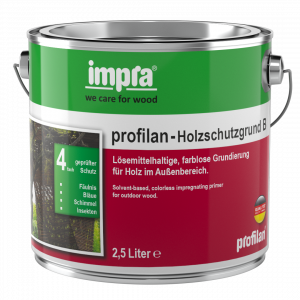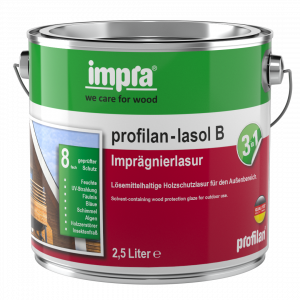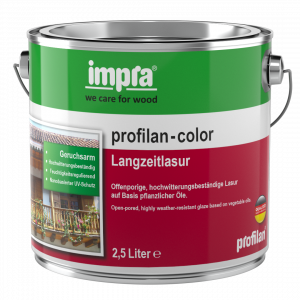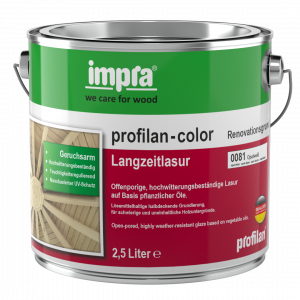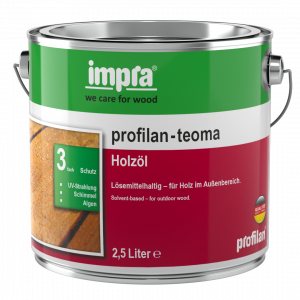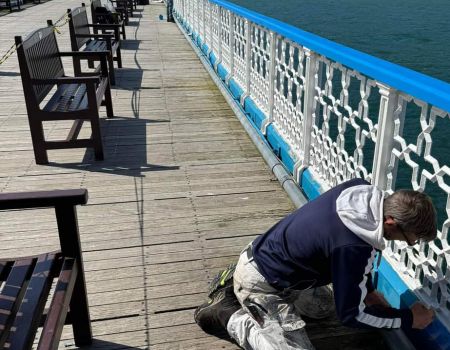profilan® is the water-based and solvent-based professional programme for the protection and finishing of wood for interior and exterior use.
With our coordinated systems of primers, glazes and opaque colours, no design wishes remain unfulfilled. The demand on our products is clear: Highest processing quality, convincing results and optimal protection! We implement these goals in our own research and development department with ever new ideas and products for you when it comes to wood protection, surface systems and care.
The solvent-based profilan® product range offers protection for gates, carports, balconies, windows and doors, fences, boarding, soffits and much more made of wood.
profilan®-color sets standards. Equipped with plant-based binders, its high weather resistance offers perfect UV protection on a nano basis. Optimised stability also ensures easier application and better results on vertical surfaces.
With windows and doors made of wood, you bring a good piece of nature into your home and give it a very special style and personal touch. With our profilan®-elan you can enjoy an all-round good living feeling.
A balcony expands your living space considerably. It offers free space, air, sun, peace and relaxation and thus contributes noticeably to an increase in the quality of life. With profilan®-lasol you can protect your wood in many selected colours.
With profilan® you turn wood into an experience!
Wood in the garden needs protection and care. Even robust tropical and hardwoods such as teak, bangkirai, Douglas fir or larch quickly become grey and unsightly without care. profilan®-teoma was developed for these types of wood.
The wood oil penetrates deep into the wood, smoothes the wood structure and makes wood resistant to water and dirt. Your wood looks lively fresh again, feels pleasant and is easy to clean. Especially garden furniture such as chairs, benches and tables, but also patio floors, wooden decks, pergolas and privacy screens visibly gain in value.
Applications
Airless spraying

Airless is an airless atomising paint spraying process in which, in contrast to air atomisation (Airmix), the material is atomised solely via the material pressure. In this process, the material is pressurised by an electrically or pneumatically operated pump and presses the material through a nozzle bore at up to 250 bar. There, the material is split into a spray jet.
Airmix process

In the Airmix process, the additional air is fed into the spray jet via the nozzle slope before the paint emerges. This guarantees a quiet, stable spray jet and uniform paint application. This means that lower pressures are required.
Flooding
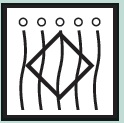
Rational, material-saving application process for primers and intermediate coatings. In special flooding systems, wooden components are sprayed with excess by means of conveyor systems, primarily in closed circuits.
Dipping
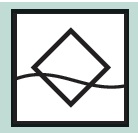
Particularly rational application method for primers and intermediate coatings, which is almost loss-free due to special dipping tubs, with usually manual handling of the individual wooden components.
Vakumat
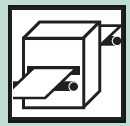
Loss- and overspray-free, profile-independent vacuum coating of profile elements and surfaces. Excess paint is applied in a housing that is closed on all sides, and is evenly extracted again by generating a vacuum. A variety of coating media and layer thicknesses can be used by changing the suction strength. Precise all-round and segmental coating is possible in a single operation. High-quality surfaces are achieved. Depending on the coating system, layer thicknesses of 10 to 200 µ/m² can be achieved. Extremely high production speeds can also be achieved.
Brush
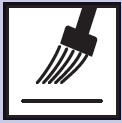
This simplest form of protective treatment is mainly used by do-it-yourselfers. In the commercial sector, the painting method is only considered in special cases due to the cost and time involved, such as the treatment of large components (e.g. glulam) or the post-protection of fresh interfaces. In order to achieve the required application quantities, several work steps are usually necessary.
ESTA
In electrostatically assisted coating, atomisation takes place via the airmix or airless process. In addition, there is a repulsion effect due to the same-pole charging of the material droplets, which can considerably refine the spray pattern. The charged droplets try to discharge themselves on a grounded object. This creates an attractive force of the droplets to the grounded workpiece. According to the ratio of attraction effect and droplet acceleration, the application efficiency can be significantly improved by this technique. Under ideal conditions, an application efficiency of up to 90 % can be achieved.
















